 Inhabiting a strange dimension between the Byrds-meets-the-Rolling Stones bluster of their debut LP and the psychedelic mariachi sprawl of Forever Changes, Love’s Da Capo is a transitional album in every sense of the word. Taken together, the six songs that constitute its “Side A Suite” represent some of the best music of the ’60s, making it all the more painful that Side B represents one of its biggest let-downs. On the opening track, “Stephanie Knows Who”, Arthur Lee not only comes into his own, but also establishes himself as one of the most unique and expressive lead vocalists of his generation. There are probably Hallmark cards that are less maudlin and sappy than the MacLean-penned second track, “Orange Skies”, but somehow, miraculously, the band’s tight playing and Lee’s delivery elevate it to greatness. The loungey “¡Que Vida!” is a bit of fluff, but it swings like a Sunset Strip hipster. The mighty “Seven and Seven Is”, one of the few Love songs that ever charted, has been reproduced on garage compilations many times over, but hearing it here in its natural environment reveals what a massive artistic achievement it really is. Loud, fast, and intense, it could only end with the famous nuclear blast of its coda. Thankfully, respite is provided in the form of the acoustic and introspective gem, “The Castle”. Finally comes the mystical masterpiece, “She Comes in Colors”, a song so great that even the Hooters couldn’t ruin it when they covered it almost two decades later. But then there’s the meandering blues-jam, “Revelation”. Taking up that whole flipside and clocking in at almost 20 minutes, it’s perhaps unfairly maligned. On its own merits it’s not terrible, but here it only detracts from the focused brilliance of what came before, and it wears out its welcome quickly. Had wiser council prevailed at Elektra, Da Capo would take its place among such giants such as Are You Experienced?, Piper at the Gates of Dawn, and even its creators’ own definitive artistic statement, Forever Changes. But instead this sophomore effort has to settle for “almost great” status. However, it is still essential. – Richard
Inhabiting a strange dimension between the Byrds-meets-the-Rolling Stones bluster of their debut LP and the psychedelic mariachi sprawl of Forever Changes, Love’s Da Capo is a transitional album in every sense of the word. Taken together, the six songs that constitute its “Side A Suite” represent some of the best music of the ’60s, making it all the more painful that Side B represents one of its biggest let-downs. On the opening track, “Stephanie Knows Who”, Arthur Lee not only comes into his own, but also establishes himself as one of the most unique and expressive lead vocalists of his generation. There are probably Hallmark cards that are less maudlin and sappy than the MacLean-penned second track, “Orange Skies”, but somehow, miraculously, the band’s tight playing and Lee’s delivery elevate it to greatness. The loungey “¡Que Vida!” is a bit of fluff, but it swings like a Sunset Strip hipster. The mighty “Seven and Seven Is”, one of the few Love songs that ever charted, has been reproduced on garage compilations many times over, but hearing it here in its natural environment reveals what a massive artistic achievement it really is. Loud, fast, and intense, it could only end with the famous nuclear blast of its coda. Thankfully, respite is provided in the form of the acoustic and introspective gem, “The Castle”. Finally comes the mystical masterpiece, “She Comes in Colors”, a song so great that even the Hooters couldn’t ruin it when they covered it almost two decades later. But then there’s the meandering blues-jam, “Revelation”. Taking up that whole flipside and clocking in at almost 20 minutes, it’s perhaps unfairly maligned. On its own merits it’s not terrible, but here it only detracts from the focused brilliance of what came before, and it wears out its welcome quickly. Had wiser council prevailed at Elektra, Da Capo would take its place among such giants such as Are You Experienced?, Piper at the Gates of Dawn, and even its creators’ own definitive artistic statement, Forever Changes. But instead this sophomore effort has to settle for “almost great” status. However, it is still essential. – Richard
Rock
Beyond Nuggets:
A Guide to ’60s Ephemera
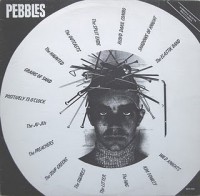
In 1972 Elektra Records’ Jac Holzman asked future Patti Smith Group guitarist and bassist Lenny Kay to compile what was a essentially a glorified mixed tape, resulting in Nuggets: Original Artyfacts of the First Psychedelic Era. This release became synonymous with the term “Garage Rock”, but this designation is not entirely accurate. Though rough and tumble staples like the 13th Floor Elevators and the Seeds are represented, more poppy-sounding bands like the Mojo Men, Sagittarius (featuring Glenn Campbell on vocals), and a host of other acts—some of whom were nowhere near a suburban garage when they cut these sides — are there too. Nuggets’ legacy is not so much its innovative (re)packaging of near hits, but its role in defining an aesthetic and its establishing of multiple genres and sub-genres: acid rock, power pop, sunshine pop, imitation Merseybeat, Dylan copycats, blue-eyed soul, even early Latino-rock — they’re all here along with more that send rock critics reaching for their thesauruses and record collectors scrambling for their paypal accounts. Perhaps neither Kaye nor Holzman knew the long-term ramifications of their Frankenstenian experiment. Indeed, the monster they created essentially spawned a whole industry, that of the Esoteric 60’s Music Compilation. It’s an industry that refuses to die, even almost 40 years later. Exploring this brave new world can be a daunting task. Here then is a quick guide to some logical starting points:
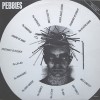 1. Pebbles – Conceived and created in Australia only a few years after the original Nuggets, this series focused on more raw and obscure (though not entirely unknown) acts from the US. Numerous volumes and offshoot series of widely varying quality proliferated through the 70’s and 80’s, but volumes 1-6 are pretty darn solid.
1. Pebbles – Conceived and created in Australia only a few years after the original Nuggets, this series focused on more raw and obscure (though not entirely unknown) acts from the US. Numerous volumes and offshoot series of widely varying quality proliferated through the 70’s and 80’s, but volumes 1-6 are pretty darn solid.
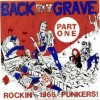 2. Back From The Grave – One of the few series worthy of the “60’s Garage Rock” classification, the US bands represented here are young, fast, raw, and sometimes very poorly recorded, which undoubtedly adds to its authenticity.
2. Back From The Grave – One of the few series worthy of the “60’s Garage Rock” classification, the US bands represented here are young, fast, raw, and sometimes very poorly recorded, which undoubtedly adds to its authenticity.
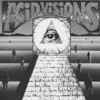 3. Acid Visions – Regional garage and psych compilations are very common. This one focuses on the Lone Star State, which produced a surprisingly diverse and consistently high quality array of sounds in the ’60s. The third and final volume focuses on female artists, a very underrepresented demographic in this male-dominated realm.
3. Acid Visions – Regional garage and psych compilations are very common. This one focuses on the Lone Star State, which produced a surprisingly diverse and consistently high quality array of sounds in the ’60s. The third and final volume focuses on female artists, a very underrepresented demographic in this male-dominated realm.
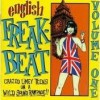 4. English Freakbeat – Since suburban two-car garages are not as common in England, perhaps it was inevitable that a moniker for similar music from the British Isles would be invented, and “Freakbeat” seems just as apt as any. Though the bands on these five LPs share many commonalities with their American garage brethren, a rawer and more purist blues sensibility often dominates.
4. English Freakbeat – Since suburban two-car garages are not as common in England, perhaps it was inevitable that a moniker for similar music from the British Isles would be invented, and “Freakbeat” seems just as apt as any. Though the bands on these five LPs share many commonalities with their American garage brethren, a rawer and more purist blues sensibility often dominates.
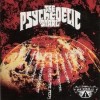 5. Rubble – While this Anglocentric series covers the Freakbeat sound like the series mentioned above, its emphasis is on the more cerebral and whimsical Psych-Pop of the late ’60s British and European scenes. Though spotty at times, many installments in this twenty volume series have numerous great tracks.
5. Rubble – While this Anglocentric series covers the Freakbeat sound like the series mentioned above, its emphasis is on the more cerebral and whimsical Psych-Pop of the late ’60s British and European scenes. Though spotty at times, many installments in this twenty volume series have numerous great tracks.
Further listening: One would think that by this point everything worthwhile has been unearthed, but the excavation continues. As unknown sides from the US and British scenes of the 60’s become scarcer, collectors are looking to more unexplored caches. Private pressings, underground Prog Rock, and Global Garage Rock have been the subject of many comps as of late. Cambodian Rocks delves into a thriving Asian scene that was tragically quashed when the Khmer Rouge took power. Love, Peace, and Poetry, a series still in progress, spans the globe to bring listeners impossibly rare pysch from the ’60s and ’70s. —Richard P
Are we forgetting your favorite series? Share your comments here:
Frank Zappa “Hot Rats” (1969)
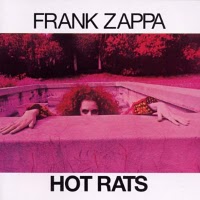 If there’s one thing I’m a sucker for, it’s psychedelic wah-wah guitar; Eddie Hazel’s Game, Dame & Guitar Thangs, Randy California’s Kapt. Kopter, John McLaughlin’s Devotion. And Frank Zappa’s second solo effort, 1969’s Hot Rats, proudly belongs among this stellar mind-blowing company. Somewhat of a break from the high-concept Mothers Of Invention, it’s divided between long guitar jams, most notably “Willie The Pimp,” which re-introduced Captain Beefheart to the world in all his eccentric splendor, and fusionoid instrumentals featuring multi-reedist Ian Underwood in multiple overdubs. Interestingly, Underwood’s flat intonation here takes intriguing lyrical compositions such as “Little Umbellas” and “It Must be A Camel” out of jazz wannabe Weather Report territory into a more formal “classical” direction, always the underlying goal with Zappa anyway. But, in the end, Rats is a showcase for Frank to wail and he ain’t fooling around! –Singersaints
If there’s one thing I’m a sucker for, it’s psychedelic wah-wah guitar; Eddie Hazel’s Game, Dame & Guitar Thangs, Randy California’s Kapt. Kopter, John McLaughlin’s Devotion. And Frank Zappa’s second solo effort, 1969’s Hot Rats, proudly belongs among this stellar mind-blowing company. Somewhat of a break from the high-concept Mothers Of Invention, it’s divided between long guitar jams, most notably “Willie The Pimp,” which re-introduced Captain Beefheart to the world in all his eccentric splendor, and fusionoid instrumentals featuring multi-reedist Ian Underwood in multiple overdubs. Interestingly, Underwood’s flat intonation here takes intriguing lyrical compositions such as “Little Umbellas” and “It Must be A Camel” out of jazz wannabe Weather Report territory into a more formal “classical” direction, always the underlying goal with Zappa anyway. But, in the end, Rats is a showcase for Frank to wail and he ain’t fooling around! –Singersaints
Camel “The Snow Goose” (1975)
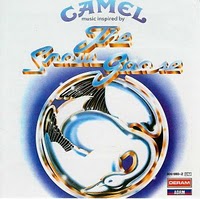 The Snow Goose is an essential experience, evocative and emotional, ambitious in it’s concept and execution, but accessible as well. The band manage to sustain an entirely instrumental album by filling it with brief, memorable pieces, carried by their always measured performances. While most of the album is devoted to the familiar Camel sound, they are joined in places by a small woodwinds group, expanding the scope of the music. Although you’ll want to leave the needle in place once you drop it, a few especially awesome moments are worth mentioning in particular, such as the multi-dimensional “Rhayader Goes To Town”, “The Snow Goose” which features some tender, spine-tingling guitar phrases, the duo of “Preparation”, with it’s foreboding sequencer pattern, and it’s haunting, slow-boiling partner in “Dunkirk”. But this is a complete, constantly unfolding album that should be heard with the lights down low, brew of choice in hand, the world of The Goose swooping into your listening room and filling the next 40 minutes with it’s sublime sounds. –Ben
The Snow Goose is an essential experience, evocative and emotional, ambitious in it’s concept and execution, but accessible as well. The band manage to sustain an entirely instrumental album by filling it with brief, memorable pieces, carried by their always measured performances. While most of the album is devoted to the familiar Camel sound, they are joined in places by a small woodwinds group, expanding the scope of the music. Although you’ll want to leave the needle in place once you drop it, a few especially awesome moments are worth mentioning in particular, such as the multi-dimensional “Rhayader Goes To Town”, “The Snow Goose” which features some tender, spine-tingling guitar phrases, the duo of “Preparation”, with it’s foreboding sequencer pattern, and it’s haunting, slow-boiling partner in “Dunkirk”. But this is a complete, constantly unfolding album that should be heard with the lights down low, brew of choice in hand, the world of The Goose swooping into your listening room and filling the next 40 minutes with it’s sublime sounds. –Ben
Bob Dylan “Blood On The Tracks” (1975)
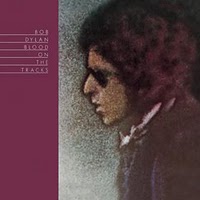 Quite simply, Blood On The Tracks is my favourite Dylan album. In one of those too few illuminating moments, I knew the first time I heard it that this was something special and through the years it has sustained me through some really bad times: divorce, depression and my Dad’s death. When written, Dylan himself was experiencing the traumas of a marriage break-up and all the muddled feelings that engenders are in evidence – sadness, bitterness, anger, relief and regret. But, even with this background, Blood On The Tracks is not a depressing album. “You’re Gonna Make Me Lonesome When You Go”, “If You See Her, Say Hello”, “You’re A Big Girl Now” and “Tangled Up In Blue” expose a man unsure of his feelings but striving to make a good fist of it. I could, and still can, identify with that. Even though his turbulent emotions must have been a dominating factor, Dylan also managed to pen a couple of wonderful morality tales: “Simple Twist Of Fate” and “Shelter From The Storm”, and a brilliantly inventive novella: “Lily, Rosemary And The Jack Of Hearts.” Blood On The Tracks will remain an album I will return to again and again. –Ian
Quite simply, Blood On The Tracks is my favourite Dylan album. In one of those too few illuminating moments, I knew the first time I heard it that this was something special and through the years it has sustained me through some really bad times: divorce, depression and my Dad’s death. When written, Dylan himself was experiencing the traumas of a marriage break-up and all the muddled feelings that engenders are in evidence – sadness, bitterness, anger, relief and regret. But, even with this background, Blood On The Tracks is not a depressing album. “You’re Gonna Make Me Lonesome When You Go”, “If You See Her, Say Hello”, “You’re A Big Girl Now” and “Tangled Up In Blue” expose a man unsure of his feelings but striving to make a good fist of it. I could, and still can, identify with that. Even though his turbulent emotions must have been a dominating factor, Dylan also managed to pen a couple of wonderful morality tales: “Simple Twist Of Fate” and “Shelter From The Storm”, and a brilliantly inventive novella: “Lily, Rosemary And The Jack Of Hearts.” Blood On The Tracks will remain an album I will return to again and again. –Ian
Buffalo Springfield “Buffalo Springfield Again” (1967)
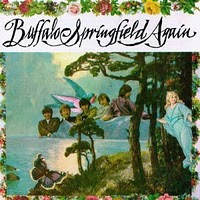 Just a little over 30 minutes long, and it goes in about as many directions. Neil Young’s songs don’t seem to belong on the same record as those of Stills or Furay; actually, they don’t seem to belong in the same universe. Yet the record as a whole doesn’t seem messy at all, but powerful, even focused, by its diversity. I used to love the Young songs — even the psychedelic weirdness of “Broken Arrow” — but these days I find myself attracted to the Stills songs, which are some of his best. “Bluebird” in particular manages to seem both sleek and cryptic at the same time, and the Stills-Young guitar team is a wonder (take that, Yardbirds!). Really, the only clunker is the Dewey Martin-sung “Good Time Boy”, a fairly terrible Otis parody (but at least it adds soul to the band’s armory). Everything else works, even “Mr Soul”, on which Neil borrows a riff from the Rolling Stones. And not for the last time, either. –Brad
Just a little over 30 minutes long, and it goes in about as many directions. Neil Young’s songs don’t seem to belong on the same record as those of Stills or Furay; actually, they don’t seem to belong in the same universe. Yet the record as a whole doesn’t seem messy at all, but powerful, even focused, by its diversity. I used to love the Young songs — even the psychedelic weirdness of “Broken Arrow” — but these days I find myself attracted to the Stills songs, which are some of his best. “Bluebird” in particular manages to seem both sleek and cryptic at the same time, and the Stills-Young guitar team is a wonder (take that, Yardbirds!). Really, the only clunker is the Dewey Martin-sung “Good Time Boy”, a fairly terrible Otis parody (but at least it adds soul to the band’s armory). Everything else works, even “Mr Soul”, on which Neil borrows a riff from the Rolling Stones. And not for the last time, either. –Brad
Jackson Browne “Late for the Sky” (1974)
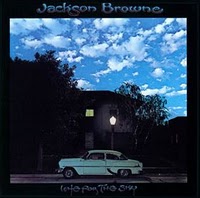 One of those artifacts that sort of sum up the 1970s for me, along with the films Annie Hall, Nashville and Three Women. Like those movies, Late for the Sky deals with the aftermath of a romance in dreamy, almost surreal style. If you’re looking for rock, look elsewhere; but if you lean to the Nick Drake/Tim Buckley end of the singer-songwriter spectrum and you’ve been put off by Browne’s reputation for cloying navel-gazing, then put your prejudices aside and listen to this record. –Brad
One of those artifacts that sort of sum up the 1970s for me, along with the films Annie Hall, Nashville and Three Women. Like those movies, Late for the Sky deals with the aftermath of a romance in dreamy, almost surreal style. If you’re looking for rock, look elsewhere; but if you lean to the Nick Drake/Tim Buckley end of the singer-songwriter spectrum and you’ve been put off by Browne’s reputation for cloying navel-gazing, then put your prejudices aside and listen to this record. –Brad
ZZ Top “Eliminator” (1983)
 Whilst I admit to only having heard some of ZZ Top’s early albums, I fail to see how Eliminator could be considered a radical change in direction or why loyal fans should be so vociferous in their condemnation. Okay, the odd synthesiser has sneaked into the mix, the singles and videos were played to vomit-inducing levels on MTV and the band found themselves permeated into the mainstream, but is all that really worth getting your knee-length beard in a knot over? If compromises have been made, the result is a high-class exhibition of Texas boogie suffused with sex and booze and….T.V. Dinners. It was the album which put ZZ Top on my map and, if the band were in the business to make money, Eliminator was the licence for the band to print their own. The only downer I can think of was the videos were on such high rotation I eventually suffered from total burnout and had to hide the album away for fear of mental breakdown. Coming back to this today highlights how badly Eliminator has aged. There is no doubting which decade the album was released. Bill Ham has over-produced the album to such an extent that all blemishes and rough edges have been eradicated. The problem is, by doing so, he’s leeched away some of the individuality and quirkiness that made ZZ Top the bearded wonders they were. It’s the equivalent of a model’s face being airbrushed after a magazine photo-shoot only for the process to have been taken to extremes and all her facial features being wiped clean. That said, this is still an enjoyable album. “Gimme All Your Lovin'”, “Sharp Dressed Man”, “Got Me Under Pressure”, “I Got The Six”, “Dirty Dog” and “Bad Girl” bounce along with all the verve of a sweaty roadhouse on a Saturday night but “Legs” has become a victim of its own success; over-exposure has completely removed any enjoyment. Eliminator is no classic but it retains a sense of nostalgic charm that can’t be overlooked. –Ian
Whilst I admit to only having heard some of ZZ Top’s early albums, I fail to see how Eliminator could be considered a radical change in direction or why loyal fans should be so vociferous in their condemnation. Okay, the odd synthesiser has sneaked into the mix, the singles and videos were played to vomit-inducing levels on MTV and the band found themselves permeated into the mainstream, but is all that really worth getting your knee-length beard in a knot over? If compromises have been made, the result is a high-class exhibition of Texas boogie suffused with sex and booze and….T.V. Dinners. It was the album which put ZZ Top on my map and, if the band were in the business to make money, Eliminator was the licence for the band to print their own. The only downer I can think of was the videos were on such high rotation I eventually suffered from total burnout and had to hide the album away for fear of mental breakdown. Coming back to this today highlights how badly Eliminator has aged. There is no doubting which decade the album was released. Bill Ham has over-produced the album to such an extent that all blemishes and rough edges have been eradicated. The problem is, by doing so, he’s leeched away some of the individuality and quirkiness that made ZZ Top the bearded wonders they were. It’s the equivalent of a model’s face being airbrushed after a magazine photo-shoot only for the process to have been taken to extremes and all her facial features being wiped clean. That said, this is still an enjoyable album. “Gimme All Your Lovin'”, “Sharp Dressed Man”, “Got Me Under Pressure”, “I Got The Six”, “Dirty Dog” and “Bad Girl” bounce along with all the verve of a sweaty roadhouse on a Saturday night but “Legs” has become a victim of its own success; over-exposure has completely removed any enjoyment. Eliminator is no classic but it retains a sense of nostalgic charm that can’t be overlooked. –Ian
Captain Beefheart “Trout Mask Replica” (1969)
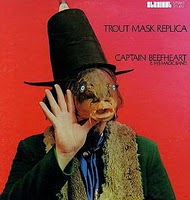 The Captain’s best known album really divides opinion. Some see it as utter unlistenable garbage others see it as some sort of musical nirvana. In truth it probably falls somewhere between the two extremes. It is indeed hard to listen too and it takes time to fully absorb the music. It is like the blues has crashed into an Albert Ayler gig and the two don’t make easy bedfellows. Still there is some incredibly complex and impressive playing contained within. The Rhythm section must have had nightmares when Beefheart turned up with the score, yes every note was written not improvised. Also if possible the lyrics seem even more out there than usual and reside firmly in the leftfield. The album does however contain two of my favourite Beefheart tracks in “Moonlight On Vermont” and “Dachau Blues.” –Jon
The Captain’s best known album really divides opinion. Some see it as utter unlistenable garbage others see it as some sort of musical nirvana. In truth it probably falls somewhere between the two extremes. It is indeed hard to listen too and it takes time to fully absorb the music. It is like the blues has crashed into an Albert Ayler gig and the two don’t make easy bedfellows. Still there is some incredibly complex and impressive playing contained within. The Rhythm section must have had nightmares when Beefheart turned up with the score, yes every note was written not improvised. Also if possible the lyrics seem even more out there than usual and reside firmly in the leftfield. The album does however contain two of my favourite Beefheart tracks in “Moonlight On Vermont” and “Dachau Blues.” –Jon
Badfinger “Wish You Were Here” (1974)
 Simply put Badfinger’s best album, contains no hit singles and was surprisingly pulled from the shelves (which can’t have helped Pete Ham’s fragile mind) but everything here has a cohesion and quality control lacking on other albums. ‘Just A Chance’ is a fabulous rocker, amongst the best of the band’s career, ‘You’re So Fine’, ‘Know One Knows’, ‘Love Time’, ‘King Of The Load’ could all quite conceivably been hit singles, all show the band’s poppier style to fine effect, ‘Got To Get Out Of Here’ and ‘Dennis’ show off a more acoustic, reflective almost countryish style whilst ‘In The Meantime/Some Other Time’ and ‘Meanwhile Back At The Ranch/Should I Smoke’ are pure power pop, lavishly arranged, musically and melodically as inventive as the band was ever to get, it lacks one of Ham’s gorgeous ballads but otherwise this is as good as they ever got, shame then that it was to be the band’s final album before Pete Ham’s suicide, they could have gone on to even better things. –Derek
Simply put Badfinger’s best album, contains no hit singles and was surprisingly pulled from the shelves (which can’t have helped Pete Ham’s fragile mind) but everything here has a cohesion and quality control lacking on other albums. ‘Just A Chance’ is a fabulous rocker, amongst the best of the band’s career, ‘You’re So Fine’, ‘Know One Knows’, ‘Love Time’, ‘King Of The Load’ could all quite conceivably been hit singles, all show the band’s poppier style to fine effect, ‘Got To Get Out Of Here’ and ‘Dennis’ show off a more acoustic, reflective almost countryish style whilst ‘In The Meantime/Some Other Time’ and ‘Meanwhile Back At The Ranch/Should I Smoke’ are pure power pop, lavishly arranged, musically and melodically as inventive as the band was ever to get, it lacks one of Ham’s gorgeous ballads but otherwise this is as good as they ever got, shame then that it was to be the band’s final album before Pete Ham’s suicide, they could have gone on to even better things. –Derek
Free “Free” (1969)
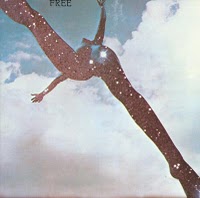 From the moment I heard the opening chords of the funky Stones-like strut “Trouble On Double Time” I was hooked on “Free.” Free’s self-titled second LP is a bit more retrained than Tons of Sobs and more soulful than their breakthrough album, Fire and Water, making it my favorite, and one that holds up to repeated listening. Side one kicks off with the ominous classic “I’ll Be Creepin,” followed by the aforementioned “Trouble” and closes with the hypnotic “Mouthful Of Grass,” a memorable, mostly instrumental track with a choir supplying wordless vocals. Side two doesn’t disappoint as it begins with the heavy blues-rocker “Woman” and ends with the melancholy “Mourning Sad Morning.” For those most familiar with Free through their overplayed hit “All Right Now” or through lead singer Paul Rodgers’ stint in equally overplayed Bad Company check out this early LP and their equally fantastic debut, Tons of Sobs. –David
From the moment I heard the opening chords of the funky Stones-like strut “Trouble On Double Time” I was hooked on “Free.” Free’s self-titled second LP is a bit more retrained than Tons of Sobs and more soulful than their breakthrough album, Fire and Water, making it my favorite, and one that holds up to repeated listening. Side one kicks off with the ominous classic “I’ll Be Creepin,” followed by the aforementioned “Trouble” and closes with the hypnotic “Mouthful Of Grass,” a memorable, mostly instrumental track with a choir supplying wordless vocals. Side two doesn’t disappoint as it begins with the heavy blues-rocker “Woman” and ends with the melancholy “Mourning Sad Morning.” For those most familiar with Free through their overplayed hit “All Right Now” or through lead singer Paul Rodgers’ stint in equally overplayed Bad Company check out this early LP and their equally fantastic debut, Tons of Sobs. –David
Lou Reed “Lou Reed” (1972)
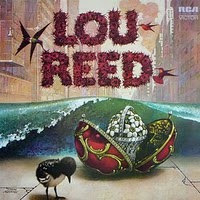 Yes, a couple members of Yes do perform on this, the first solo album by the so-called godfather of punk, but thankfully you rarely sense it. And no, I suppose this isn’t essential Lou Reed; but minor Lou is better than no Lou, and better than most other music, too. These are barebones arrangements, tentative and sketchy, but they point the way to his incredibly strange 70s career as well as taking a rather bleary look back at the last couple of VU records. That is to say, this sounds like the burned out leader of the Velvet Underground has to borrow some of his old band’s tunes in order to get a full album out; but it also sounds like a rock ’n’ roll original busy reinventing himself in new times. So “I Can’t Stand It” gets the 70s guitar-rock treatment, while the version of “Lisa Says” is the same arrangement that we hear on the VU Live 1969 set, injected with even more sleazy soul. There are some real missteps, particularly when Steve Howe makes his presence felt: the first incarnation of “Berlin” starts out well but gets a little goofy, with flourishes thoroughly out of step with Reed’s aesthetic; and “Ride into the Sun” sports a guitar solo that’s simply tasteless. “Walk and Talk It” is another Velvets’ remake that doesn’t come off particularly well, with a Stonesy riff that sounds tossed off and limp. And there’s no question that the take on “Ocean” here is deeply flawed, with tympani and cymbal swells that don’t adhere to the rest of the album’s low-key vibe. But there are at least two lost classics buried here too: the infectious “Wild Child” and the wistful “Love Makes You Feel” seem to me just about essential Reed songs. And yes, it also sounds shitty, production-wise—especially the drums, which sound like ice cream buckets. But this lends the album a trashy Lower East Side feel that I find irresistible. All in all, this is a fine, fine little record that is unjustly overlooked even by his biggest fans. –Will
Yes, a couple members of Yes do perform on this, the first solo album by the so-called godfather of punk, but thankfully you rarely sense it. And no, I suppose this isn’t essential Lou Reed; but minor Lou is better than no Lou, and better than most other music, too. These are barebones arrangements, tentative and sketchy, but they point the way to his incredibly strange 70s career as well as taking a rather bleary look back at the last couple of VU records. That is to say, this sounds like the burned out leader of the Velvet Underground has to borrow some of his old band’s tunes in order to get a full album out; but it also sounds like a rock ’n’ roll original busy reinventing himself in new times. So “I Can’t Stand It” gets the 70s guitar-rock treatment, while the version of “Lisa Says” is the same arrangement that we hear on the VU Live 1969 set, injected with even more sleazy soul. There are some real missteps, particularly when Steve Howe makes his presence felt: the first incarnation of “Berlin” starts out well but gets a little goofy, with flourishes thoroughly out of step with Reed’s aesthetic; and “Ride into the Sun” sports a guitar solo that’s simply tasteless. “Walk and Talk It” is another Velvets’ remake that doesn’t come off particularly well, with a Stonesy riff that sounds tossed off and limp. And there’s no question that the take on “Ocean” here is deeply flawed, with tympani and cymbal swells that don’t adhere to the rest of the album’s low-key vibe. But there are at least two lost classics buried here too: the infectious “Wild Child” and the wistful “Love Makes You Feel” seem to me just about essential Reed songs. And yes, it also sounds shitty, production-wise—especially the drums, which sound like ice cream buckets. But this lends the album a trashy Lower East Side feel that I find irresistible. All in all, this is a fine, fine little record that is unjustly overlooked even by his biggest fans. –Will


